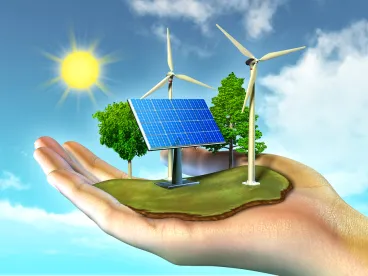Even though communities are likely to reap many benefits from proposed renewable energy projects, local opposition can delay – or altogether thwart – the progress of renewable energy projects. Most renewable energy projects require some level of zoning or permit approvals to proceed, and garnering support is proving to be especially difficult. This final post of our three-part series on the 2020 renewable energy outlook (read the first post here and the second post here) examines how local opposition can form and what utilities can do to gain a community’s backing and trust.
Spotting Signs of Local Opposition
While residents and local governments may like the idea of wind and solar energy, they may also prefer them to be developed elsewhere. Some of the issues that communities near project sites have raised include: the towers are too tall, the setbacks are too small, the noise and shadow flicker created from the towers will be too great, and the decrease in adjacent property values will be substantial. In addition, we have seen many counties review their local ordinances to establish rules specific to the development of wind or solar farms. Some counties have added stringent requirements that have made development uneconomical or infeasible. Therefore, developers should be alert to such proceedings in jurisdictions where they are contemplating siting a project and may consider participating and commenting in the rulemaking process.
Concerns about disrupting area industry is another tool local opposition might use to resist renewable energy project development. For example, developers and municipalities have pushed hard to have wind farms installed right off the shore of Long Island. They have consistently been met with resistance from all sides. Scallop farmers argue that such development would upset the ocean floor, negatively impact their ability to fish, and upset the $1 billion-dollar boat-to-plate industry. As a result, the plan to build a windfarm 20 miles off the east end of Long Island was withdrawn.
Illinois and other states have faced similar push back for solar and wind farms. In March 2018, McHenry County residents attempted to fight off a proposed solar farm on 35 acres of farmland. One of the main arguments, which is not uncommon, was that the solar farm would decrease the value of the surrounding properties and be an eyesore. The zoning board eventually voted to allow the farm to be built, but did so in the face of harsh siting ordinances and stiff opposition from members of the surrounding community. In Indiana, a wind farm investor recently sued Montgomery County for passing allegedly onerous local ordinances and resolutions in violation of agreements with the company and after the company had already spent millions of dollars on the development of the wind farm.
And “local community” can involve more than just “people.” Bird conservation groups recently sued the U.S. Department of Energy and U.S. Army Corps of Engineers over their funding and authorization of a proposed offshore wind energy facility in Lake Erie. The groups argue that the environmental assessments conducted for the project are inadequate.
Strategies to Gain Community Trust
As the previous examples illustrate, obtaining community support can be a major hurdle for new renewable energy projects. We have previously written about community support specific to projects sited on potentially contaminated properties in Renewable Energy World. Wherever they build, utilities interested in developing renewable energy can consider taking the following steps to help garner support from communities:
-
Hold consistent discussions with local officials to keep them informed. Local officials can share insights about the local community and concerns that community members may have about a developer’s planned development. Fostering a proactive relationship with local officials and building a foundation of trust can also help to ensure timely project approvals and minimal administrative delays.
-
Provide “educational days” where community members and officials can learn about the project and the technology behind it. Developers should tailor these educational and informational sessions to the concerns of area residents, which will vary depending on the project and the community. Topics of discussion could include an introduction to the project vision and technology, as well as the benefits and costs of a project to the community, such as job creation and visual, aesthetic, and economic impacts to the community.
-
Create a project website that has information about the project, project renderings, and contact information for the developers. A project website can help to further build trust through information-sharing among community members. It can also help to improve community access to information about public meetings and ways to participate in the project development and approval process.
-
Publicize the economic, financial, and fiscal benefits that a project will bring to the community. Developing renewable energy bring a variety of economic, financial, and fiscal benefits to a community by, for example, creating new manufacturing, construction, and installation jobs, infusing new investment into the community, and providing property and income tax payments that help support the local communities. Publicizing these local benefits can help get communities and any focused opposition groups on board with a renewable energy project.
Implementing the above strategies can help to ensure that a utility garners community support and that project development is not delayed or halted by local opposition.





 />i
/>i
